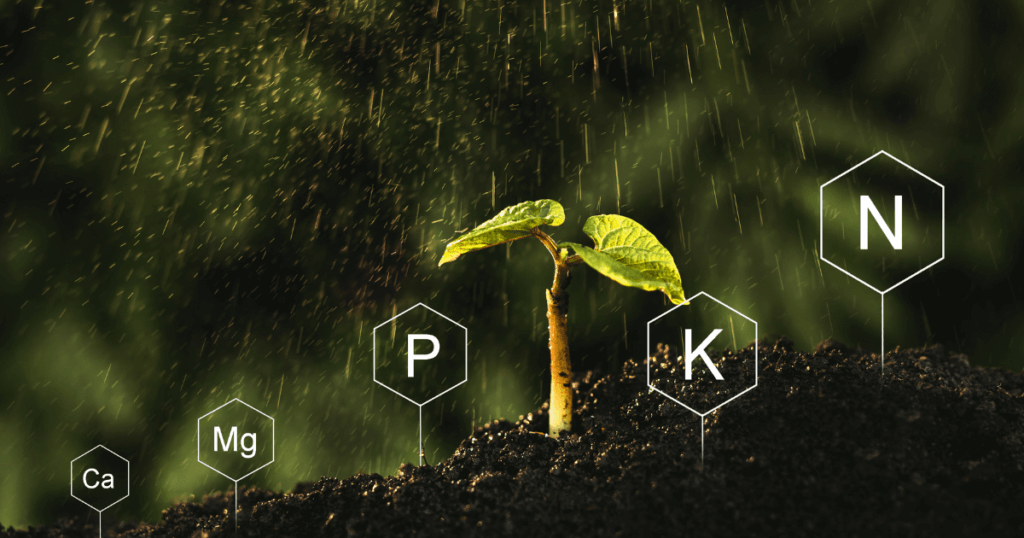Nurturing Plants: Indoor Farming Nutrient Management

Some of the links in this post are affiliate links. As an Amazon Associate, we earn a referral fee from qualifying purchases—at no extra cost to you.
Growing plants indoors has gained immense popularity in recent years due to its numerous benefits. However, successful indoor farming requires careful nutrient management to ensure optimal plant growth and productivity. In this article, we will explore the significance of nutrient management in indoor farming and provide valuable insights into how you can nurture your plants effectively. From understanding the role of nutrients to implementing proper feeding schedules, we will cover everything you need to know to create a thriving indoor garden.
Table of Contents
The Importance of Nutrient Management
Ensuring Plant Health and Growth
Proper nutrient management is crucial for the health and growth of indoor plants. Nitrogen, phosphorus, and potassium are essential in various physiological processes, including photosynthesis, root development, and flower formation. Maintaining a well-balanced nutrient supply provides plants with the necessary elements for optimal growth, resulting in healthy foliage, strong stems, vibrant flowers, and bountiful yields.
Preventing Nutrient Deficiencies and Toxicity
Adequate nutrient management helps prevent nutrient deficiencies and toxicity, which can harm plant health. Nutrient deficiencies can lead to stunted growth, yellowing leaves, and reduced fruit production. On the other hand, nutrient toxicity can cause nutrient imbalances, leaf burn, and even plant death. By closely monitoring nutrient levels and adjusting accordingly, you can ensure that your plants receive the right amount of nutrients without overwhelming them.
Understanding Plant Nutrient Requirements
Before delving into nutrient management techniques, it’s essential to have a basic understanding of the primary nutrients plants require and their roles:
1. Nitrogen (N)
Nitrogen is crucial for plant growth and chlorophyll production. It aids in the formation of amino acids, proteins, and enzymes. Nitrogen deficiency often results in yellowing leaves and stunted growth.
2. Phosphorus (P)
Phosphorus is vital for energy transfer and root development. It promotes strong root systems and enhances flowering and fruiting. Plants deficient in phosphorus may exhibit purplish leaves and reduced overall growth.
3. Potassium (K)
Potassium regulates various physiological processes, including water uptake, nutrient transport, and enzyme activation. It strengthens plants, improves disease resistance, and enhances fruit quality. Symptoms of potassium deficiency include weak stems, leaf scorching, and reduced yield.
4. Secondary and Micronutrients
Secondary nutrients, such as calcium (Ca), magnesium (Mg), and sulphur (S), along with essential micronutrients like iron (Fe), manganese (Mn), zinc (Zn), copper (Cu), boron (B), and molybdenum (Mo), are also crucial for plant growth. While they are required in smaller quantities, their deficiency can significantly impact plant health and productivity.
Implementing Effective Nutrient Management Strategies
1. Conducting Soil and Water Analysis

Before starting your indoor garden, assessing the quality of your soil and water is essential. Soil analysis helps identify nutrient deficiencies and pH levels, enabling you to tailor your nutrient management approach accordingly. Similarly, water analysis allows you to understand the mineral composition of your water source and make necessary adjustments for optimal plant nutrition.
Soil Test Kit – Luster Leaf 1601 Rapitest Test Kit This easy-to-use soil test kit helps gardeners quickly test for pH, nitrogen, phosphorus, and potassium levels, which is essential for adjusting nutrient plans based on real data.
Bluelab PENSOLN pH Pen for Water Testing A reliable digital pH pen that allows you to test the pH of your water or nutrient solution, helping to ensure your plants are absorbing nutrients effectively.
2. Choosing the Right Growing Medium
Selecting the appropriate growing medium is crucial for nutrient management in indoor farming. Different plants have varying preferences, so consider factors like water retention, aeration, and nutrient-holding capacity when choosing your medium. Common growing mediums include soil-based mixes, coco coir, perlite, vermiculite, and hydroponic systems.
Coco Coir Brick – Mother Earth Coco Plus Perlite Mix A premium coco coir mix with perlite that provides excellent water retention and aeration for indoor farming. Ideal for hydroponics, container gardening, and seed starting.
3. Planning a Feeding Schedule
Establishing a feeding schedule is vital to ensure a consistent nutrient supply for your indoor plants. Consider the specific needs of each plant species, as different plants have varying nutrient requirements at different growth stages. Begin with a balanced fertilizer during the vegetative stage and transition to a bloom-specific formula during the flowering stage. Regularly monitor your plants’ progress and adjust the feeding schedule and nutrient concentrations accordingly.
General Hydroponics Flora Series Nutrient Trio This 3-part nutrient system is perfect for hydroponic and soil gardening, offering balanced feeding throughout the plant’s lifecycle—from growth to bloom.
4. Monitoring and Adjusting Nutrient Levels
Monitoring nutrient levels is crucial to prevent imbalances and ensure optimal plant health. Conduct periodic soil and tissue tests to assess nutrient availability and identify deficiencies or excesses. Adjust your nutrient solutions or fertilizers to maintain a proper nutrient balance based on the test results. Remember to follow the recommended dosage guidelines to avoid over or underfeeding your plants.
5. Considering Supplemental Nutrients
In addition to the primary nutrients, plants may benefit from supplemental nutrients to support their specific growth requirements. For instance, calcium and magnesium supplements can help prevent nutrient deficiencies and improve overall plant health. Consider using organic supplements like seaweed extracts, fish emulsion, or compost tea to provide additional micronutrients and promote biological activity in the growing medium.
6. pH Monitoring and Adjustment
pH plays a critical role in nutrient availability to plants. Most indoor plants thrive in a slightly acidic to neutral pH range (5.5-6.5). Regularly monitor the pH of your nutrient solution or growing medium and make necessary adjustments using pH-up or pH-down solutions. Maintaining the proper pH range ensures optimal nutrient uptake and minimizes the risk of nutrient deficiencies or toxicities.
General Hydroponics pH Control Kit Includes pH up and down solutions and a testing kit—an essential combo for keeping your nutrient solution within the ideal range for plant uptake.
7. Proper Watering Techniques
Watering is an integral part of nutrient management. Overwatering can lead to nutrient leaching and oxygen deprivation, while underwatering can cause nutrient accumulation and drought stress. Water your plants thoroughly, allowing excess water to drain out, and avoid letting the roots sit in standing water. Implement a regular watering schedule based on your plants’ needs and adjust as necessary, considering factors like temperature, humidity, and growth stage.
Haws Indoor Watering Can with Long Spout This elegant and ergonomic watering can allows you to reach deep into planters and provide controlled watering without disturbing delicate roots or splashing nutrients.
8. Incorporating Organic Matter
Adding organic matter to your growing medium can significantly improve nutrient management. Organic matter enhances soil structure, water-holding capacity, and nutrient retention. Incorporate compost, aged manure, or organic amendments into your soil or growing medium to provide slow-release nutrients and promote microbial activity. This helps create a healthy and fertile environment for your plants to thrive.
Wiggle Worm Soil Builder Earthworm Castings An all-natural soil amendment that improves nutrient retention and microbial activity, ideal for boosting indoor plant health organically.
Conclusion
Nutrient management is a critical aspect of indoor farming that directly impacts your plants’ health, growth, and productivity. By understanding the essential nutrients, implementing effective strategies, and closely monitoring your plants’ needs, you can create an optimal nutrient environment for indoor gardening success. Remember to conduct soil and water analysis, choose the right growing medium, plan a feeding schedule, monitor and adjust nutrient levels, consider supplemental nutrients, monitor pH levels, practice proper watering techniques, and incorporate organic matter. With diligent nutrient management, you can nurture your indoor plants and enjoy a flourishing indoor garden.
FAQs – Nutrient Management
1. How do environmental factors affect nutrient uptake in plants?
Environmental conditions such as temperature, humidity, and light intensity can influence how effectively plants absorb nutrients. High temperatures can increase water and nutrient uptake, while excessive humidity may lead to poor root oxygenation, affecting nutrient absorption.
2. What is nutrient lockout, and how can it be prevented?
Nutrient lockout occurs when pH imbalances or excessive nutrient concentrations prevent plants from absorbing essential minerals. To avoid this, maintain proper pH levels (usually between 5.5 and 6.5 for most plants) and avoid over-fertilization.
3. Can I use homemade fertilizers for nutrient management, and what are the best options?
Yes, homemade fertilizers like compost tea, banana peel water (rich in potassium), and eggshell tea (for calcium) can be effective. However, they should be used carefully to ensure balanced nutrient supply and avoid deficiencies.
4. How do I recognize early signs of nutrient deficiencies in plants?
Symptoms such as yellowing leaves (nitrogen deficiency), purple-tinged stems (phosphorus deficiency), or leaf curling and browning (potassium deficiency) can indicate nutrient imbalances. Regular monitoring of plant health can help catch these issues early.
5. Are synthetic or organic fertilizers better for nutrient management?
Both have advantages: synthetic fertilizers provide precise nutrient ratios and fast absorption, while organic fertilizers improve soil health and release nutrients gradually. The best choice depends on your growing medium, plant type, and environmental conditions.
Other Useful sites related to Nutrient Management
- Hydroponics:
This Wikipedia article offers a comprehensive overview of hydroponic systems, which are widely used in indoor farming. It covers various techniques such as static solution culture, fogponics, passive sub-irrigation, ebb and flow, run-to-waste, and deep water culture, all of which have unique approaches to nutrient delivery and management. - Nutrient Film Technique (NFT):
This Wikipedia page delves into the Nutrient Film Technique, a hydroponic method where a thin film of nutrient-rich water flows over plant roots. It discusses the history, design considerations, flow rates, and common crops grown using NFT, providing insights into efficient nutrient management in indoor settings. - Hydroponic Farming: How to Grow Plants Without Soil:
This article from Agriculture Land USA explores hydroponic farming methods, emphasizing the importance of nutrient management in soil-less cultivation. It discusses various hydroponic systems and the role of nutrient solutions in promoting plant growth. - Hydroponic Farming: The Bengal System:
This piece from GVHI.co.nz discusses the Bengal System of hydroponic farming, highlighting its approach to nutrient management and its historical significance in the development of hydroponic techniques. - Vertical Farming Benefits:
This Guardian article discusses how vertical farming techniques, which involve growing crops indoors in stacked layers, can save space, water, and reduce emissions, all while increasing yield. It emphasizes the role of precise nutrient management in these systems to optimize plant growth and resource efficiency.







